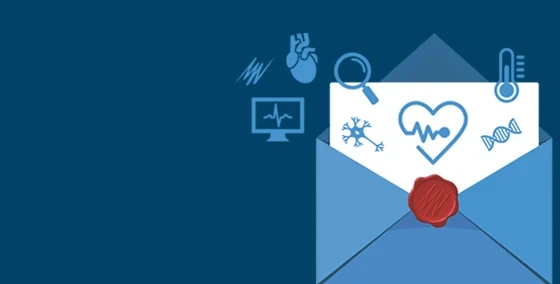Every month our team of Instructional Designers meets for “Talking Teaching” – sessions where we share and discuss interesting articles, methods, and pedagogies.
This month, we discussed how we could use Mind, Brain and Education Science to inform instructional design. In this blog, I’d like to discuss how principles from this unique field of study can help students to learn more effectively - and how you can introduce these principles into your own teaching.
Move through the slides for a quick overview:
What is Mind, Brain, and Education Science?
Mind, Brain, and Education Science is a distinct field closely related to neuroeducation. It’s easy to say educators should use principles from psychology and neuroscience. However, it’s harder to bring findings into the classroom and apply them in a way that improves learning.
Mind, Brain, and Education Science tries to bridge this gap, and investigates ways to help humans learn. It synthesizes principles from psychology, neuroscience and educational pedagogy to create evidence-based teaching practices to help people learn. Note that this field deals specifically with human learning (not animal or machine).
"The problem that Mind, Brain, and Education Science is trying to solve is that we often go 'Hey, educators should learn neuroscience,' which is true, but which parts of neuroscience are they going to learn - and how are they actually going to apply those principles in the classroom? There is a lot of theory and it often doesn't translate to practice easily."
Six key tenets of Mind, Brain, and Education Science
There are six main tenets that came out of the dissertation underlying this field.
1. Brains are unique, just like fingerprints
The brain is like a fingerprint - it is unique for each person. There is no average brain because every single person has a different way of functioning.
2. Each person is differently prepared to learn different tasks
Because each brain is different, the ability to learn a new task is also different between individuals.
3. New learning is influenced by prior experience

Cartoon attributed to Hans Traxler (1929), taken from NC State University resources
Just like in the cartoon, each person will perform differently on a single task because:
- Your brain is a network of connections
- Each experience shapes those connections
- Everyone has a different life and different experiences.
Each person has very different networks, and new learning is influenced by prior experience because how we learn depends on how our existing neural network is structured.
4. The brain is constantly changing
As people go through experiences, their brains are constantly changing at a molecular level. Neurons are making new connections, and so your brain is physically changing with each new experience. These network changes exist throughout life.
5. Neuroplasticity exists throughout life
There's not an age where your brain stops being plastic. It's always learning. There are some developmental differences as people get older, but your brain's always going to be able to change, so you can always learn new things.
6. Memory + Attention = Learning
The final pillar of Mind, Brain, and Education Science is that memory and attention are needed for learning.
You can't learn without paying attention, and if you don't have any working memory, you're also not going to learn. You need both.
What is working memory? Oxford Languages defines this as "the part of short-term memory which is concerned with immediate conscious perceptual and linguistic processing."
How do we apply these principles?
Having accepted that everyone's brain is unique, how do we teach everyone effectively in the classroom? If there's a group of 30 students and they all learn differently, I (as an educator) don't have time to teach each student in a different way. Instead, I need to look for general principles that are evidence-based that could work for everyone. This is where Universal Learning Design (UDL) comes in.
Universal Learning Design
You can learn more about universal learning design here, but we will focus on three main pillars in this blog:
Engagement
By developing engaging course material and activities, we create learners who are purposeful and motivated. We can do this by:
- optimizing choice/autonomy in how to achieve the learning objective
- allowing for personal coping strategies
Representation
By sharing information effectively, we create resourceful and knowledgeable learners. We can do this by:
- presenting information clearly
- highlighting patterns between information
- supplying background knowledge
- providing knowledge 'building blocks' by defining variables and acronyms and start things out so students have the building blocks necessary to put information together
Action and expression
By allowing students to express themselves in their chosen format, we accommodate different abilities and produce strategic, goal-directed learners. We can do this by:
- designing question types that allow learners to answer questions in different ways, for example:
- physical action
- video
- audio file
- long-form text answer
The changing brain: impact on teaching
We know that the brain changes with experience. In the classroom, we want to enforce those connections that are being informed by learning. A good way to do that is retrieval practice.
You can implement retrieval practice in a number of ways:
Interleaving
In the context of applied memory research, this technique involves including examples of different problem types or categories during study sessions.
For example, if you're teaching biology and you want students to be able to differentiate between frogs and toads, you would 'interleave' examples of frogs and toads, rather than studying frogs first, and then toads. If you're teaching art history and you need students to tell the difference between three Renaissance painters, ask students to mix up the artists' paintings instead of studying each artist individually.
The research shows that students have a much better chance of differentiating these categories if you interleave them when studying.
Spacing
In this simple technique, the educator repeatedly presents information to students at different points in time - effectively revisiting the information multiple times. This also helps to reinforce the new changes in the brain as a result of learning.
Ways to implement spacing are:
- Rereading at set intervals
- Self-testing
- Low-stakes quizzes across the course
- End-of-week review sessions
- Mid-semester review sessions
Finally, we should discuss how attention and working memory contribute to effective learning.
The importance of cognitive load
There are three key things that contribute toward cognitive load.
Intrinsic load is determined by the nature of the material. Some things are just more complex than others, like calculus compared to addition. As educators, there's not much we can do to change the inherent nature of the subject we are teaching. However, to minimize load as much as possible, we can focus on building from easy to more complex ideas in order to scaffold student learning.
Extrinsic load is the effect of distractors (for example, gifs, non-instructional images, irrelevant information, sound and movement in the learning space). To minimize this load, you should focus on the important concepts, use plenty of white or negative space, be ruthless about irrelevant information, and only use illustrations that are instructional.
Germaine load is determined by the learning going on - it's what the brain is paying attention to. Instead of minimizing this, we want to maximize it, and we can do this by:
- Chunking material - breaking text up into digestible segments
- Scaffolding these chunks by placing them in a logical order
- Including functional multimedia that helps students to understand key concepts
By doing this, we can keep students' attention on what's important and not overload that short-term working memory. Note that rest, food, comfort, and environment all also affect memory and attention and are therefore important to learning. If a student is stressed, this will absolutely affect how much information they can absorb.
To reduce stress in the classroom, you can focus on making your feedback supportive and allow students to make multiple attempts at assessment.
The takeaway
Ultimately, everyone is unique and learns differently. As educators, we can and should offer multiple ways of learning. We know that the brain is physically reshaped by new information, and there are specific techniques to help enforce those new connections. Learners need memory and attention to learn, and we can structure our teaching materials to maximize germaine load so students focus on what's important.
Do you use any of these strategies? Check out the universal design learning guidelines for some more inspiration!
Additional Resources:
Clark, C. M., & Bjork, R. A. (2014). When and why introducing difficulties can enhance instruction. In V. A. Benassi, C. E. Overson, & C. M. Hakala (Eds.). Applying the science of learning in education: Infusing psychological science into the curriculum (pp. 20-30).
Cognitive Load Theory and its application in the classroom
Jørgensen, M. T., & Brogaard, L. (2021). Using differentiated teaching to address academic diversity in higher education. Learning & Teaching. 14(2): 87-110.
Tokuhama-Espinosa, T. N. (2008). The scientifically substantiated art of teaching: A study in the development of standards in the new academic field of neuroeducation (mind, brain, and education science). Capella University ProQuest Dissertation Publishing. 3310716.

